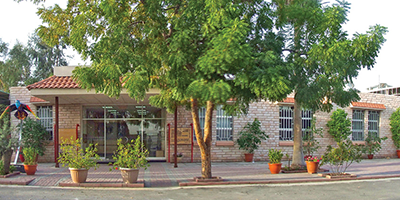
Immigration Options for Couples: Finding Your Path Together
Navigating the complexities of immigration can be challenging for couples, especially when they wish to establish a life together in a new country. There are multiple pathways to obtaining residency or citizenship, each with its own rules and requirements. In this comprehensive guide, we explore various immigration options tailored specifically for couples, whether you are married, in a long-term relationship, or planning to partner in the future. For more detailed information on partner visas, you can refer to this immigration options for couples legal guide for partner visas.
1. Spousal Visas: The Direct Route
One of the most common pathways for couples is through spousal visas. If you are legally married, your spouse may qualify for a visa that allows them to join you in your home country. In the U.S., for example, a U.S. citizen can sponsor their foreign spouse for permanent residency. The process generally involves submitting various documents proving the authenticity of your marriage, including joint financial statements and photographs together.
Each country has its own specific requirements for spousal visas, including processing times that can range from a few months to several years. Understanding the nuances of the law in the specific country you wish to migrate to is essential for a successful application.
2. Fiancé(e) Visas: For Those Still Planning the Big Day
If you are engaged but not yet married, a fiancé(e) visa is another option. In the U.S., for instance, a U.S. citizen can file a petition for their foreign fiancé(e) to enter the country for the purpose of marriage. This visa typically requires the couple to marry within 90 days of the foreign partner’s arrival.
Similar to spousal visas, the fiancé(e) visa process can involve extensive documentation to prove the legitimacy of the relationship, including communication records and proof of meeting in person. Once married, couples can then apply for a spousal visa to secure permanent residency.
3. Common-Law Partner Visas: Acknowledging Unmarried Relationships
Many countries recognize common-law partnerships, which allow couples who have lived together for a significant time to qualify for immigration benefits. The definition of a common-law partner varies widely, but it usually involves having lived together for a minimum period while presenting yourself as a couple to the public.
In Canada, for example, couples must show that they have lived together for at least 12 consecutive months. Documentation such as shared leases, joint bank accounts, and affidavits from friends can support your application.
4. Same-Sex Couple Immigration Options

With the increasing recognition of same-sex marriage around the world, many countries offer immigration pathways for same-sex couples. Couples need to provide sufficient documentation to prove the legitimacy of their relationship, similar to heterosexual couples. This path can include spousal visas and fiancé(e) visas, often with the same procedures required.
However, it is crucial to verify that the country you are moving to accepts same-sex partnerships legally, as the level of acceptance varies greatly and can influence the visa application process.
5. Alternative Visa Options for Couples
Beyond spousal and fiancé(e) visas, there are alternative pathways some couples may consider. These may include work visas, student visas, or investment visas. For example, if one partner has a work opportunity in another country, the other partner may be eligible for a dependent visa.
Similarly, if one partner is enrolled in a study program, the other may apply for a student dependent visa. Such alternatives often require specific conditions to be met and may not provide the same level of benefits as spousal or fiancé(e) visas, but they can be viable options worth exploring.
6. Considerations When Applying for Immigration as a Couple
The immigration process for couples can be complex, and it’s essential to stay organized and well-informed. Here are some vital considerations:
- Documentation: Keep thorough documentation of your relationship history, including photographs, joint finances, travel itineraries, and letters of support.
- Legal Assistance: Depending on the complexity of your situation or the requirements of the destination country, consider consulting with an immigration attorney.
- Financial Stability: Some countries require financial proof to ensure that the sponsoring partner can support the immigrant partner without reliance on government aid.
- Processing Times and Fees: Be aware of the application fees and processing times, as these can vary significantly and impact your plans.
7. The Emotional Journey of Immigration
While the legal side of immigration for couples can seem overwhelming, it is essential to remember the emotional aspect of the journey. Moving to a new country can be stressful, and couples may face various challenges, including cultural differences, language barriers, and occasional feelings of isolation.
Keeping open communication, seeking support from friends or community groups, and planning activities together can help couples build their emotional resilience during the immigration process. Remember that this significant change can also strengthen your bond as you navigate your new life together.
Conclusion
Immigration options for couples can provide various pathways to build a life together in a new country. Understanding your options—whether through spousal or fiancé(e) visas, common-law partnerships, or alternative pathways—is crucial. It often requires thorough research and planning, but with the right approach, couples can successfully navigate the immigration landscape and embark on a new journey together. For personalized advice, seeking legal guidance can be invaluable as each couple’s situation presents unique challenges and opportunities.

 تم افتتاحه عام 1979 في منطقة القرهود، دبي، الإمارات العربية المتحدة
تم افتتاحه عام 1979 في منطقة القرهود، دبي، الإمارات العربية المتحدة
 تم افتتاحه عام 1998، في البرشاء، دبي، الإمارات العربية المتحدة
تم افتتاحه عام 1998، في البرشاء، دبي، الإمارات العربية المتحدة
 تم افتتاحه عام 2018 في الخوانيج، دبي، الإمارات العربية المتحدة
تم افتتاحه عام 2018 في الخوانيج، دبي، الإمارات العربية المتحدة





